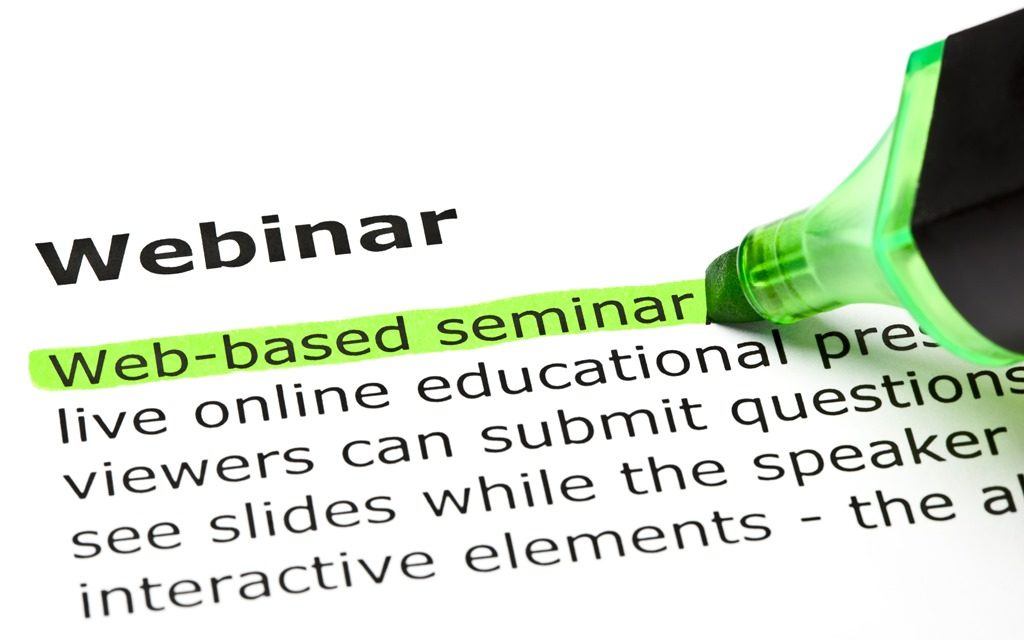Four Webinar Problems (And How To Fix Them)
Editor’s Note: This guest post is by Ken Molay, the founder of Webinar Success, which teaches busy professionals the skills to more effectively create and deliver web seminars. He blogs at The Webinar Blog.
Brad received an email from a loyal reader who outlined a litany of dissatisfactions with a webinar he had just attended. The correspondent was quite insightful with his identification of problems and how they could have been fixed. Brad asked me for my take on the subject, since webinars are my area of concentration.
With many thanks to the original author, I am going to reorganize and add more commentary to his list of suggestions in an attempt to make things more widely useful and to highlight differences between speaking in person before a local audience and speaking on a webinar to a remote audience.

PROBLEM #1: Slides and speech did not complement each other
Our correspondent identified several “worst practices” that all made it into the same presentation.
- Slides written as self-supporting handouts left the speaker with nothing to do but read them out loud to the audience.
- Placeholder slides sat on the screen for ten minutes of verbal discussion.
- Slides failed to hold visual interest
This is an area where preparing for a webinar is fundamentally different from preparing for an in-room presentation.
On stage in front of an audience, your entire body serves as a visual reference point. Steve Jobs could put a giant picture of an iPhone on the screen behind him and then just talk to the audience, because his personal presentation style and body language provided focus and interest. If your webinar consists of slides and voice with no camera, your slides take over the entire burden of stimulating visual interest and focus. Keep them moving. I shoot for a very rough rule of thumb of showing one slide per minute on average. The slide should visually support one point you are making… Then you move on to the next point and the next slide.
If you are on a close-up “talking head” webcam, you can get away with slightly less frequency of slide changing, since your face provides some visual interest. If you are filmed in a full-body long shot, you can lower the frequency of slide changes even further, since your body movements take up more of the burden.
While we are on the subject of on-camera / off-camera, our correspondent complained that he never had a sense of who the presenters were. If your webinar software allows you to place an image of the presenter next to the slide content, try to do so. If not, insert some presenter identification slides with name, title, and a nice big headshot.
Humans respond to faces, and we want a visual sense of the person we are listening to. Show the slides when speakers begin and end a segment or break for questions.

PROBLEM #2: The presenters were interrupted by background noises
I find that presenters often confuse two speaking situations. Small audio distractions that are acceptable on a small group conference call or personal phone call become frustrating and annoying on a webinar. You need the best possible audio quality you can get, with the fewest opportunities for audience distraction.
This means finding a closed-door office with good sound insulation. Posting an “ON AIR – NO NOISES” sign outside. Using a close-mouth microphone (preferably a headset). Avoiding wireless or cellular connections that can fluctuate or have dropouts. Little audio distractions quickly build into a negative perception of you as a presenter. Protect yourself as much as possible.
PROBLEM #3: Only one expert directly addressed the advertised topic, and he was held until the end
Nobody “just happens to attend” a webinar. They read a description of the topic and speaker, register, and show up at the appointed time. They have very firm expectations as to what they will receive. As a webinar host or presenter, you have an obligation to deliver on your promises. Give them the expert they came to hear. Give them the value you advertised. Don’t hold back on “the good stuff” until the end of your session.
Notice that this may be different from a room-based conference with multiple presenters on multiple topics. You can get away with (and may require) more setup and context-setting if the entire audience isn’t there for the sole purpose of hearing you and your topic.

PROBLEM #4: Each presenter began with a lengthy slide or two advertising their company
This falls into the same category of not delivering the information the audience came for. Telling people about your company is valuable and expected in certain contexts… For instance, when overcoming potential sales objections about your company’s reliability, size, and longevity. But if it is presented as an unexpected and superfluous “ad” before getting to the content they actually care about, you position your company as something to be ignored or grudgingly tolerated… A barrier to value rather than a deliverer of value. Is that how you want to be seen?
You may not be in control of every aspect of your webinar, especially if you are a guest presenter. But by looking for potential problem areas and trying to improve the audio-visual experience for your audience, you can improve your chances of coming across as prepared, persuasive, and professional. The results are worth the effort.
Feel free to look through the “Tips” category of The Webinar Blog for additional best practices. I look forward to reading your comments and additional suggestions for webinar presenters.
Ken Molay is the founder of Webinar Success, which teaches busy professionals the skills to more effectively create and deliver web seminars. He blogs at The Webinar Blog.